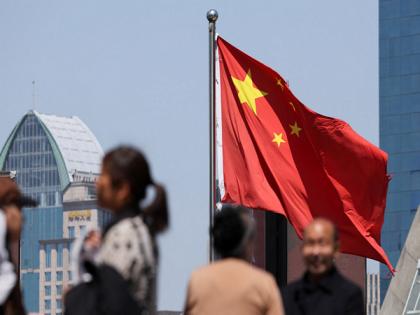Report warns China's military expansion in Tibet threatens Himalayan ecology, water security, and regional stability
By ANI | Updated: August 20, 2025 13:50 IST2025-08-20T13:40:07+5:302025-08-20T13:50:18+5:30
Dharamshala (Himachal Pradesh) [India] August 20 : China's military growth in Tibet is inflicting significant harm on the delicate ...

Report warns China's military expansion in Tibet threatens Himalayan ecology, water security, and regional stability
Dharamshala (Himachal Pradesh) [India] August 20 : China's military growth in Tibet is inflicting significant harm on the delicate Himalayan environment and poses risks to regional climate and water security, as highlighted in a fresh report released on Monday by the Stockholm-based Institute for Security and Development Policy (ISDP), according to Phayul.
The report, titled "The Ecological Cost of Security: Military Development and Environmental Change in Tibet," cautions that the swift militarisation of the Tibetan Plateau, which contains Asia's largest reserves of glaciers and permafrost, has initiated environmental alterations with impacts that reach well beyond the immediate vicinity of military bases and facilities. ISDP warns that these changes endanger both local biodiversity and water security for populations downstream in South and Southeast Asia, as reported by Phayul.
"The Chinese military presence in Tibet has developed from early force deployments in the 1950s to a complex military network intricately linked to China's national defence strategy and economic framework," the report explained. As per the International Institute for Strategic Studies, the People's Liberation Army (PLA) has stationed between 70,000 and 120,000 troops on the Tibetan Plateau, with approximately 40,000 to 50,000 based in the Tibet Military District alone.
The report references satellite images and field studies that indicate that the extensive construction of roads, tunnels, airstrips, and bases in permafrost regions has accelerated land degradation. With around 1.06 million sq. km of permafrost, the Tibetan Plateau is the globe's largest high-altitude frozen area and an essential carbon sink. However, ground temperatures have risen between 0.1 and 0.5°C annually over the past thirty years, destabilising permafrost. The report cautions that military activities exacerbate this degradation, releasing stored greenhouse gases and disrupting fragile water systems.
ISDP pointed out that "the placement of military facilities throughout Tibet represents both defensive measures and efforts at power projection, but each comes with environmental repercussions." "This degradation not only impacts local ecosystems but also contributes to global climate instability," as cited by Phayul.
The report identified approximately 35,000 sq. km of highly susceptible terrain that should be reserved from extensive military activity and called for immediate reforms in military planning. Suggested actions included establishing mandatory ecological preservation zones around glaciers and water sources, enforcing stricter construction regulations, restoring ecosystems after exercises, and investing in sustainable infrastructure like waste treatment solutions and permafrost protection technologies.
ISDP also urged Beijing to enhance transparency and collaborate with international NGOs, warning that the militarisation of Tibet's high-altitude environment has extensive cross-border repercussions.
"The ecological stability of Tibet, especially concerning its significance for Asian water security, relies on achieving a balance between military expansion and ecosystem preservation," the report concluded. "Recent environmental initiatives indicate progress, yet the pace and magnitude of development remain alarming," as cited by Phayul.
Analysts suggest that China's military buildup in Tibet is driven by both external and internal factors. Externally, Beijing perceives Tibet as a crucial buffer zone amidst its strained relations with India, with which it shares a lengthy, disputed Himalayan border. Ongoing confrontations, such as the deadly 2020 Galwan Valley clashes, have intensified China's resolve to strengthen its control over high-altitude locations and infrastructure. Internally, an increased military presence also enables Beijing to reinforce its dominance over Tibetans, whose aspirations for cultural and religious freedoms have long faced oppression, as revealed by Phayul.
Disclaimer: This post has been auto-published from an agency feed without any modifications to the text and has not been reviewed by an editor
Open in app